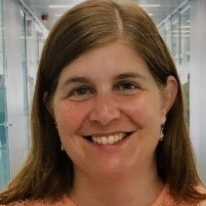Gender Diversity in STEM Disciplines
A special issue of Sustainability (ISSN 2071-1050). This special issue belongs to the section "Sustainable Education and Approaches".
Deadline for manuscript submissions: closed (31 December 2021) | Viewed by 73527
Special Issue Editors
Interests: Beyond 5G; Advanced multi-antenna techniques; Channel estimation; Software Defined Radio
Special Issues, Collections and Topics in MDPI journals
Interests: diversity in STEM; Bayesian uncertainty quantification
Interests: diversity in STEM; didactics of mathematics; STEM education; statistics; artificial intelligence
Special Issue Information
Dear Colleagues,
The digital gender gap is defined as the difference between the percentage of men and the percentage of women in the use of Information and Communication Technologies (ICTs) indicators. Ensuring equal access to ICTs is an urgent need on the 2030 Agenda for Sustainable Development, and the digital gender gap quantifies and encompasses practical ICT skills necessary for work and daily life. ICTs facilitate people’s access to health, banking services, and education, or in other words, they are enablers for the participation of people as citizens in the upcoming future Digital Society.
To achieve a more egalitarian society, it must be borne in mind that equal access to ICT also facilitates the participation of women in increasingly digital societies and in the global community. Women's access to ICTs is not only a matter of gender equality but an urgent need on the 2030 Agenda. That no one is left behind is a basic promise of the United Nations Sustainable Development Goals (SDGs).
Reducing the digital gender gap also has positive effects on the potential development and economic growth of countries. When women and girls have access to ICTs, they have the opportunity to start new businesses, sell products to new markets, find better paying jobs and access education, as well as financial and health services; thus, they help to increase GDP.
This different access to and interest in ICT is closely related to the lack of gender diversity in STEM disciplines. When it comes to the world of STEM, women are in the minority. STEM gender equality is vital to the world reaching SDGs. However, less than 30% of the world’s researchers are women and this under-representation occurs in every region in the world. Moreover, despite the need for talent that the market demands, there is a shortage of vocations in STEM fields and global female enrollment is particularly low in certain fields. This gender imbalance is present all around the world, even though women are enrolled in STEM courses more in some regions than others.
In order to solve this structural problem, it is crucial to identify the causes and to define the actions that governments and institutions can establish as political motors of changing.
This Special Issue aims to consolidate the emerging and recent research field in gender diversity in STEM disciplines. Initiatives and projects oriented to reduce the STEM diversity gap and studies about the causes and solutions to this problem are especially welcome.
Assoc. Prof. Carmen Botella
Assoc. Prof. Anabel Forte Deltell
Asst. Prof. Emilia López-Iñesta
Assoc. Prof. Silvia Rueda Pascual
Guest Editors
References
- Cracking the code: girls' and women's education in science, technology, engineering and mathematics (STEM). UNESCO 2017 http://unesdoc.unesco.org/images/0025/002534/253479e.pdf
- Bian Lin, Leslie Sarah-Jane, Cimpian Andrei . Gender stereotypes about intellectual ability emerge early and influence children’s interests. Science 2017, 355, Issue 6323, 389-391 https://science.sciencemag.org/content/355/6323/389
- She Figures 2018. Gender equality in Research and Innovation in the European Union: doctoral graduates. She Figures. European Commission; Directorate-General for Research and Innovation 2018 https://op.europa.eu/en/publication-detail/-/publication/9540ffa1-4478-11e9-a8ed-01aa75ed71a1
- Botella Carmen, Rueda Silvia, López-Iñesta Emilia, Marzal Paula. Gender Diversity in STEM Disciplines: A Multiple Factor Problem. Entropy 2019, 21, 30. https://www.mdpi.com/1099-4300/21/1/30
Manuscript Submission Information
Manuscripts should be submitted online at www.mdpi.com by registering and logging in to this website. Once you are registered, click here to go to the submission form. Manuscripts can be submitted until the deadline. All submissions that pass pre-check are peer-reviewed. Accepted papers will be published continuously in the journal (as soon as accepted) and will be listed together on the special issue website. Research articles, review articles as well as short communications are invited. For planned papers, a title and short abstract (about 250 words) can be sent to the Editorial Office for assessment.
Submitted manuscripts should not have been published previously, nor be under consideration for publication elsewhere (except conference proceedings papers). All manuscripts are thoroughly refereed through a single-blind peer-review process. A guide for authors and other relevant information for submission of manuscripts is available on the Instructions for Authors page. Sustainability is an international peer-reviewed open access semimonthly journal published by MDPI.
Please visit the Instructions for Authors page before submitting a manuscript. The Article Processing Charge (APC) for publication in this open access journal is 2400 CHF (Swiss Francs). Submitted papers should be well formatted and use good English. Authors may use MDPI's English editing service prior to publication or during author revisions.
Keywords
- STEM
- gender
- diversity
- gender gap
- ICT
- STEM education
- scientific and technological vocations in STEM
- digital society
Benefits of Publishing in a Special Issue
- Ease of navigation: Grouping papers by topic helps scholars navigate broad scope journals more efficiently.
- Greater discoverability: Special Issues support the reach and impact of scientific research. Articles in Special Issues are more discoverable and cited more frequently.
- Expansion of research network: Special Issues facilitate connections among authors, fostering scientific collaborations.
- External promotion: Articles in Special Issues are often promoted through the journal's social media, increasing their visibility.
- Reprint: MDPI Books provides the opportunity to republish successful Special Issues in book format, both online and in print.
Further information on MDPI's Special Issue policies can be found here.








